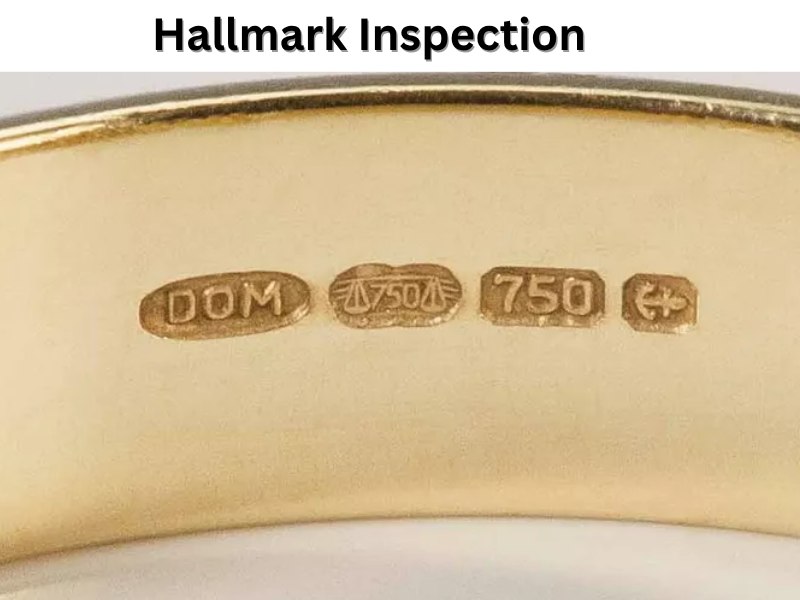Gold is a symbol of wealth, luxury, and security. Either you are buying jewellery or a gold coin, knowing the purity of gold is essential. But how can you be sure about the purity. So this blog will help you how to check the purity of gold. Here are some common method for testing it- at home or professionally.
Gold purity refers to the pure gold present in a piece of gold item to compare other metals or alloys mixed with it. Because gold is naturally soft, it would combine with other metals such as silver, copper, or zinc to give it more strength and durability—especially in jewellry. The gold purity shows the item’s value and colour. The purer the gold, the more valuable of it.
Understanding Gold Purity
To understand gold purity, you need to be familiar with two systems used in the world: karats and fineness. Both the system provides a different way to measure and represent how much pure gold an item is.
Karats
The karat is the most common measure of gold purity, especially in countries like the United States and India. Karat is a fractional measurement out of 24 parts:
- 24K gold is 100% pure gold.
- 22K gold is 91.6% pure gold.
- 18K gold is 75% pure gold.
- 14K gold is 58.3% pure gold.
- 10K gold is 41.7% pure gold.
So, a higher karat number means a higher purity gold. While 24K is the purest from among others, it is also the softest. That’s why many ornaments are made with 22K or 18K gold, which balance between purity and durability.

Fineness
Fineness is another way to check the gold purity and is used in international trade. It indicates the number of parts of gold per thousand in the alloy:
- 999 fineness means 99.9% pure gold.
- 916 fineness corresponds to 91.6% purity (22K).
- 750 fineness is 75% gold (18K).
- 585 fineness is 58.5% gold (14K).
Fineness is a more precise system than karats and is commonly found in gold bars and coins

Common Methods to Check Gold Purity
Several methods are available to check the authenticity and purity of gold.
Hallmark Inspection
One of the easiest ways to check gold purity is by examining the hallmark on the piece. A hallmark is a small stamp that signifies the gold’s purity and it’s origin. In many countries, hallmarked gold is regulated by government agencies or industry standards.

For example, in India, the BIS (Bureau of Indian Standards) hallmark certifies the purity of gold. A typical hallmark includes:
- Purity in karats or fineness
- BIS logo
- Jeweler’s identification mark
- Year of hallmarking
Always look for these indicators when buying gold. If your gold item anywhere lacks a hallmark, it may not be as pure as claimed.
Acid Test
The acid test is a traditional and not expensive method to check gold purity. It involves applying nitric acid to a small scratch on the gold item. Depending on the reaction, you can estimate the level.

How its work:
- A scratch is made on a testing stone using the gold item.
- An acid solutions are applied to the scratch.
- The reaction indicates the approximate karat level. If the gold dissolves, it’s less pure than the acid is formulated for.
Pros: Affordable, fast, and widely available.
Cons: Slightly damaging to the item , not 100% accurate.
This test is better suited for scrap gold or when you’re testing value over appearance.
Electronic & XRF Testing
Modern methods like electronic gold testers and XRF (X-ray fluorescence) analyzer provides more accurate.
Electronic Testing: These devices measure the electrical conductivity of the metal to estimate gold content. They are often used by jewellers and pawn shops for quick evaluations.
XRF Testing: XRF machines shoot low-intensity X-rays at the gold to determine its composition. This is one of the most accurate methods, often used in laboratories and by certified gold dealers.
Pros: Non-destructive, fast, accurate.
Cons: Expensive equipment, typically used by professionals.

Basic At-Home Checks
If you don’t have access to professional tools, this are few DIY methods that can give you a rough idea of gold purity. Keep in mind, these are not scientifically reliable, but they may help in identifying fake gold.
Magnet Test: Gold is non-magnetic. If a gold item is attracted to a magnet, it may be fake or mixed with other magnetic metals.
Water Test: Real gold is heavy. Drop the item in a glass of water; if it sinks, it may be real. If it floats, it is fake.
Ceramic Plate Test: Rubbing gold on a ceramic surface should leave a golden streak. A black streak indicates fake gold.
While these tests are simple, they are best used as preliminary checks and not a substitute for professional testing.
Where to Test Gold Professionally
If you’re serious about verifying your gold’s purity especially for high-value transactions professional testing is recommended.
Certified Jewelers
Most reputed jewelers have equipment to check gold purity. Some may offer the service for free if you’re buying or selling with them.
BIS Certified Centers (India)
In India, BIS-approved centers provide certified gold purity testing. They use standardized equipment and issue documentation confirming the results.
Gold Testing Laboratories
Private or government-authorized labs offer through purity analysis using XRF and spectrometric techniques. These are ideal if you’re dealing in large quantities or need certification for legal or investment purposes.
Smart Tips for Gold Buyers
Here are a few tips every buyer should remember when purchasing gold:
- Always Buy Hallmarked Gold: A BIS or other reputable hallmark assures purity and quality.
- Ask for Purity Certification: Get a written certificate of the karat or fineness.
- Check the Weight: Gold is priced by weight, so verify the item on a calibrated scale.
- Understand Making Charges: Jewellery comes with making charges that add to the cost. Compare these across different sellers.
- Buy from Reputed Sellers: Stick to established jewelers or dealers who have a reputation to protect.
- Keep the Invoice: A proper bill serves as proof of purchase and is helpful during resale or in disputes.
